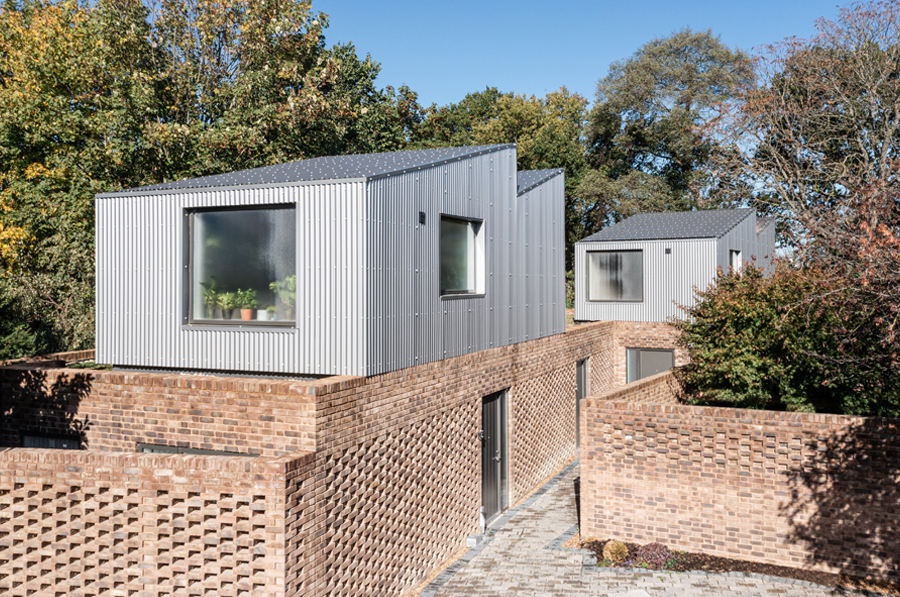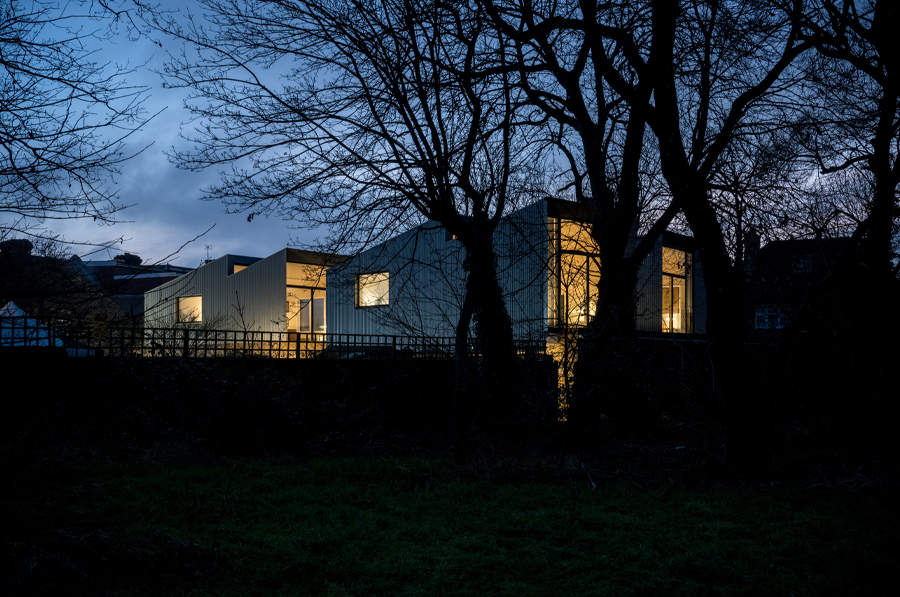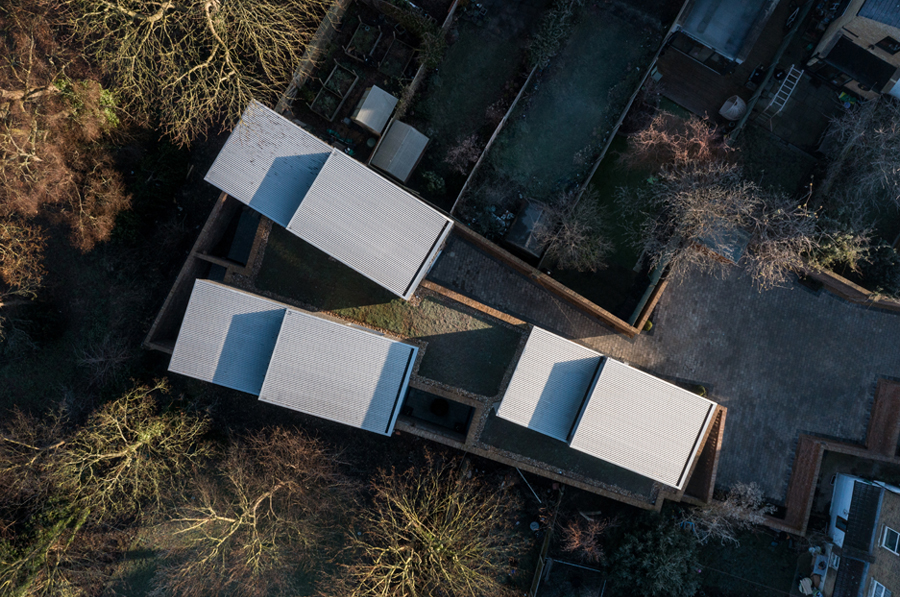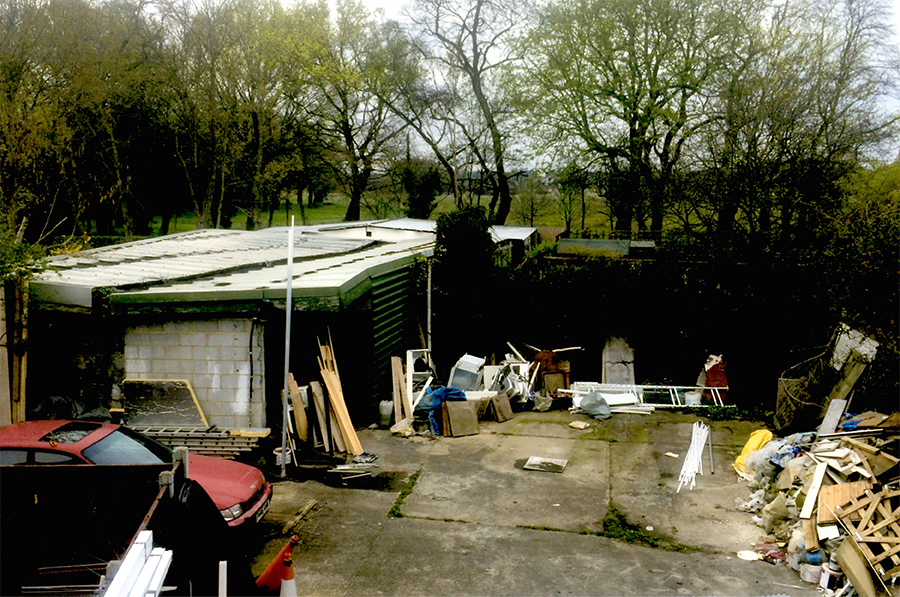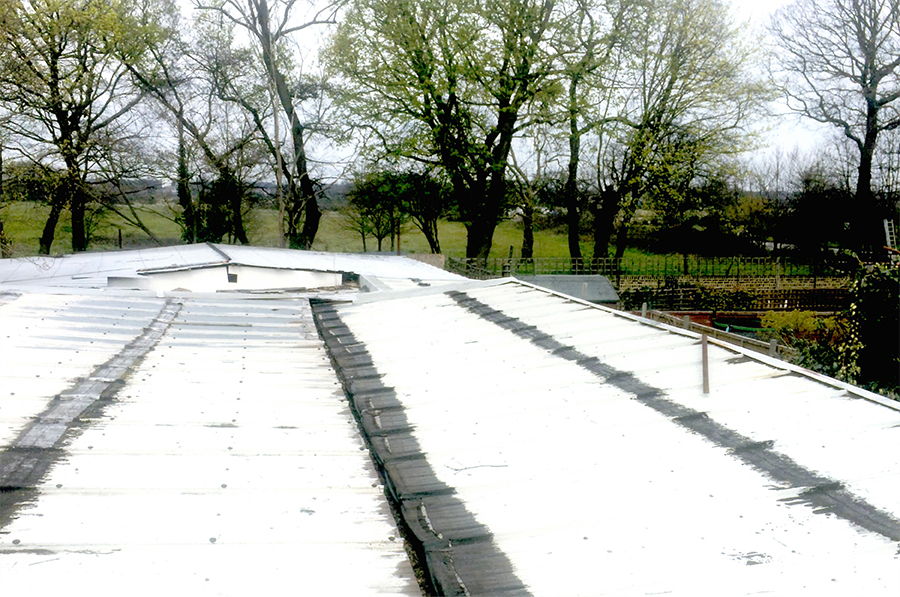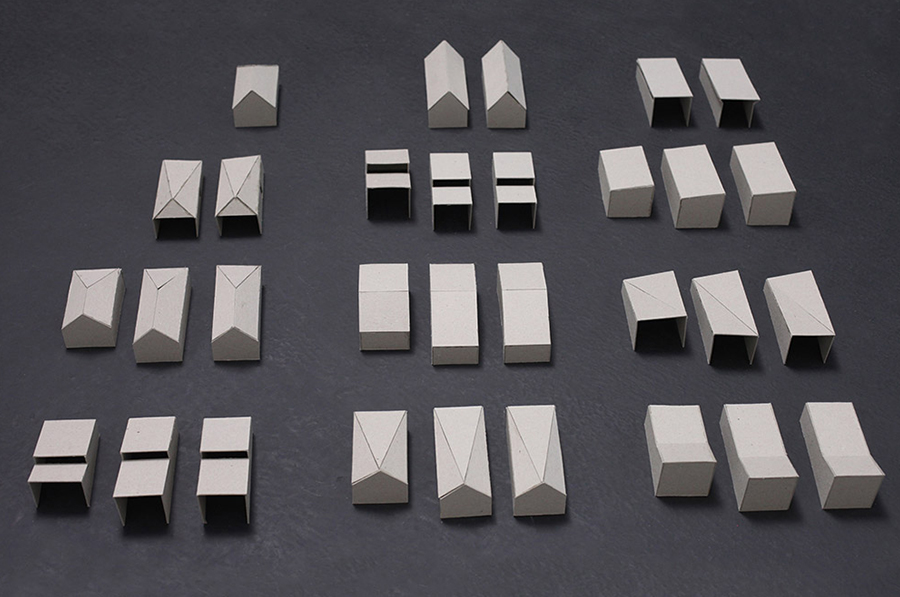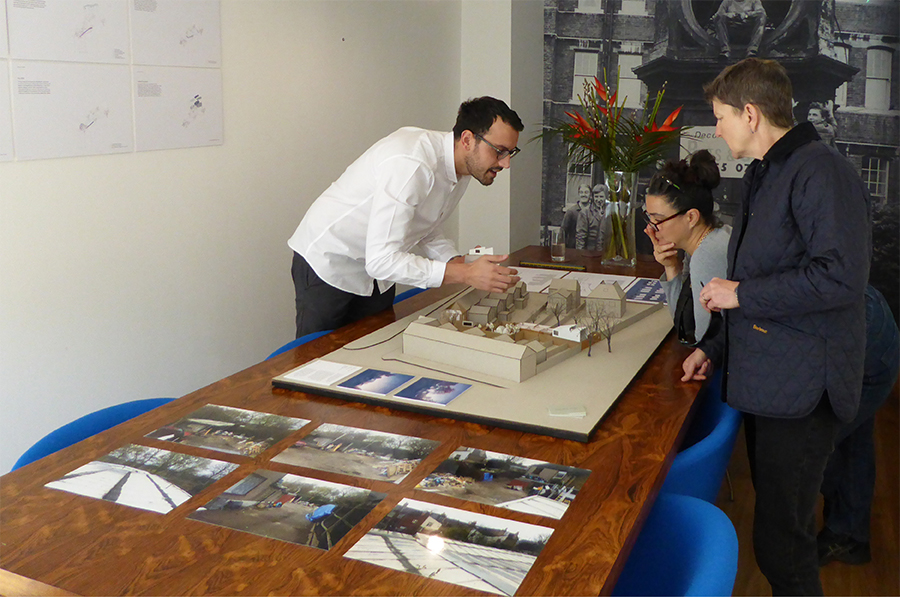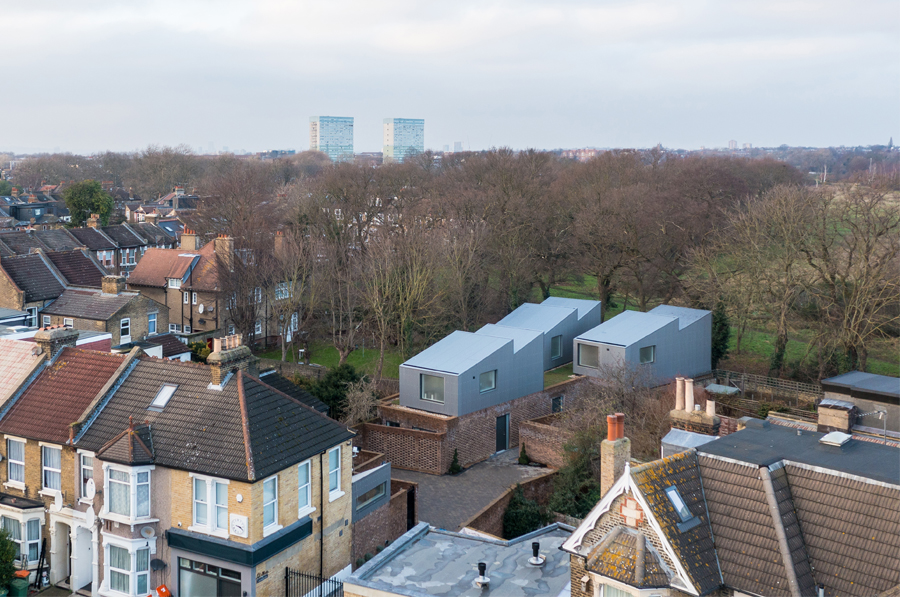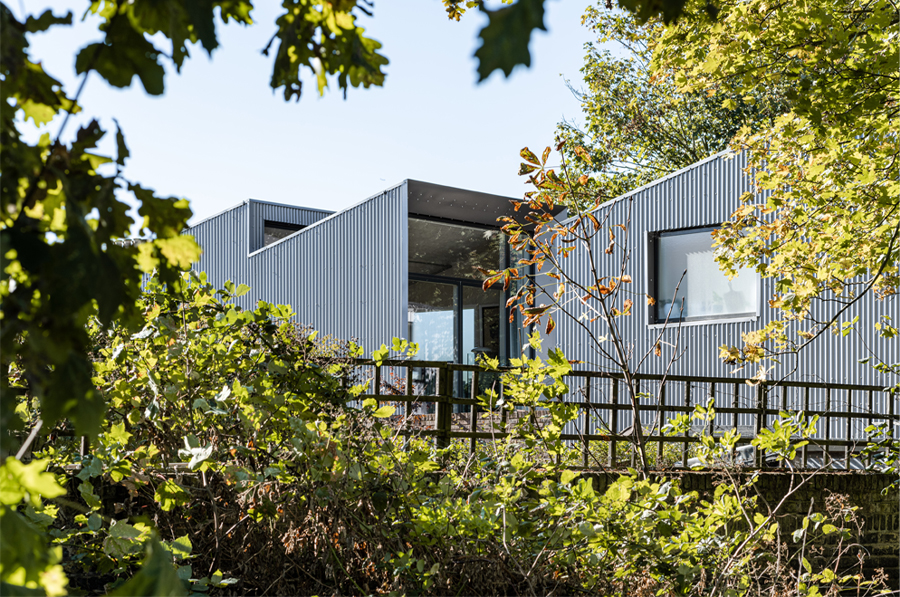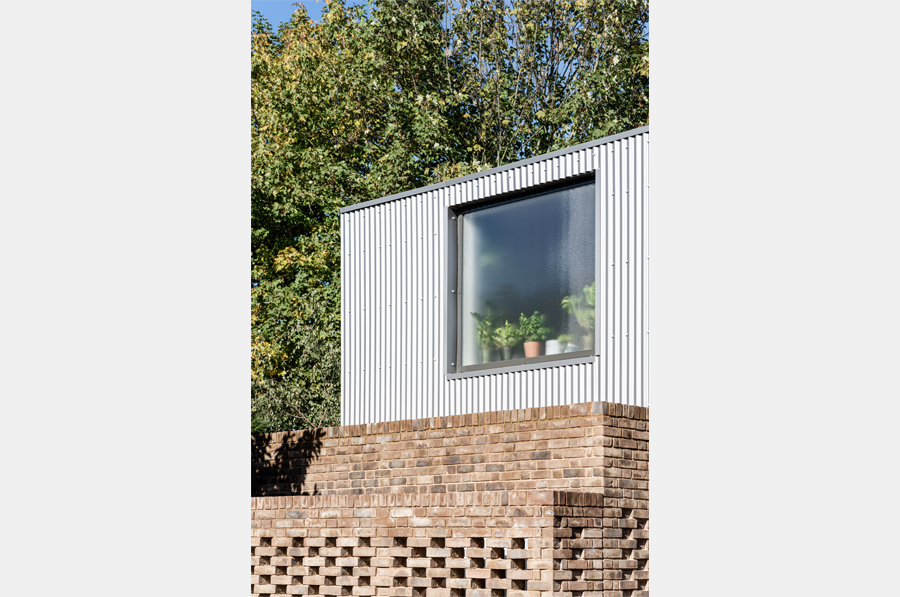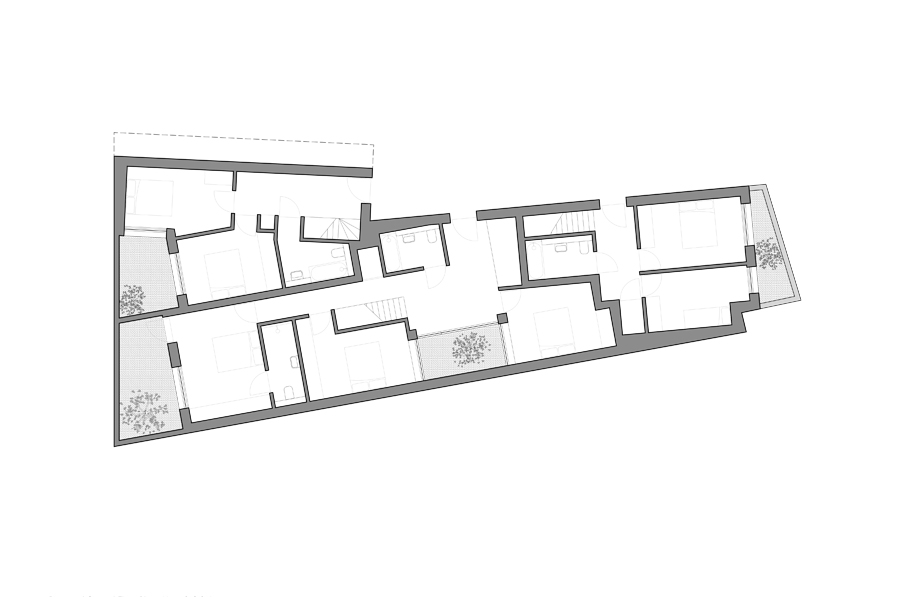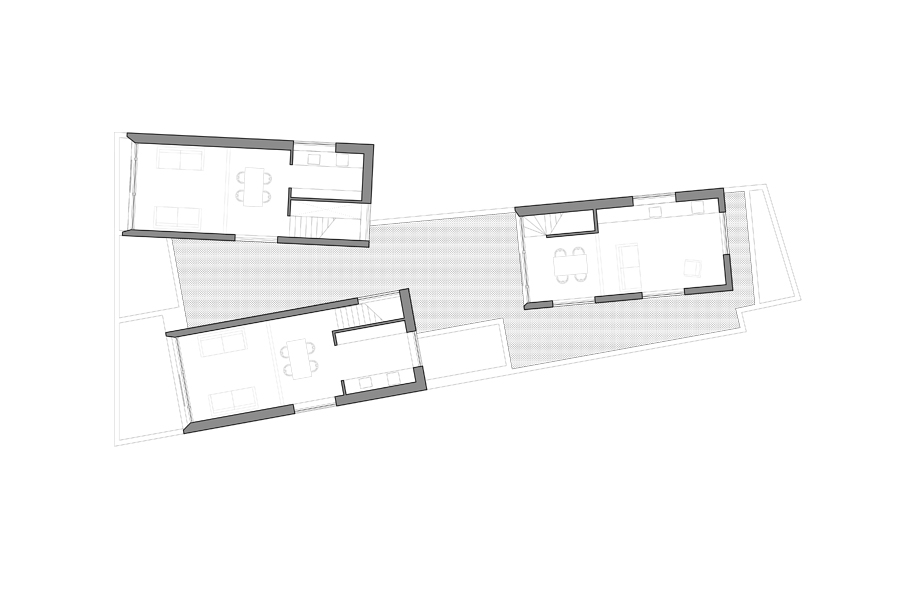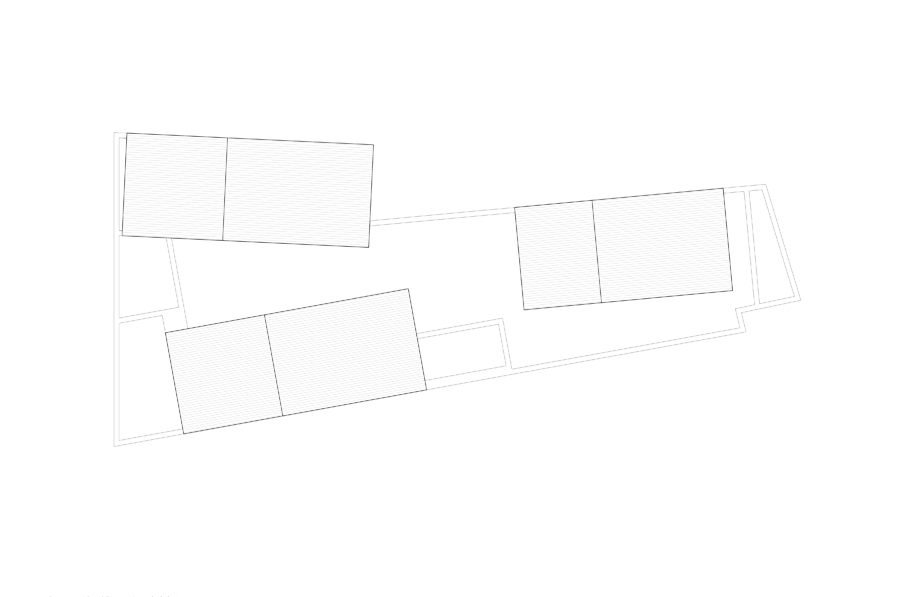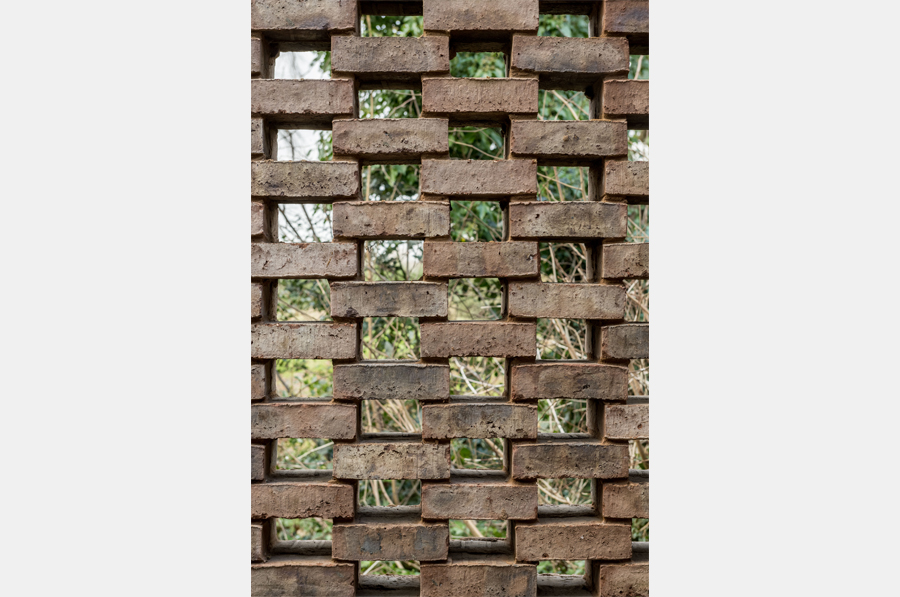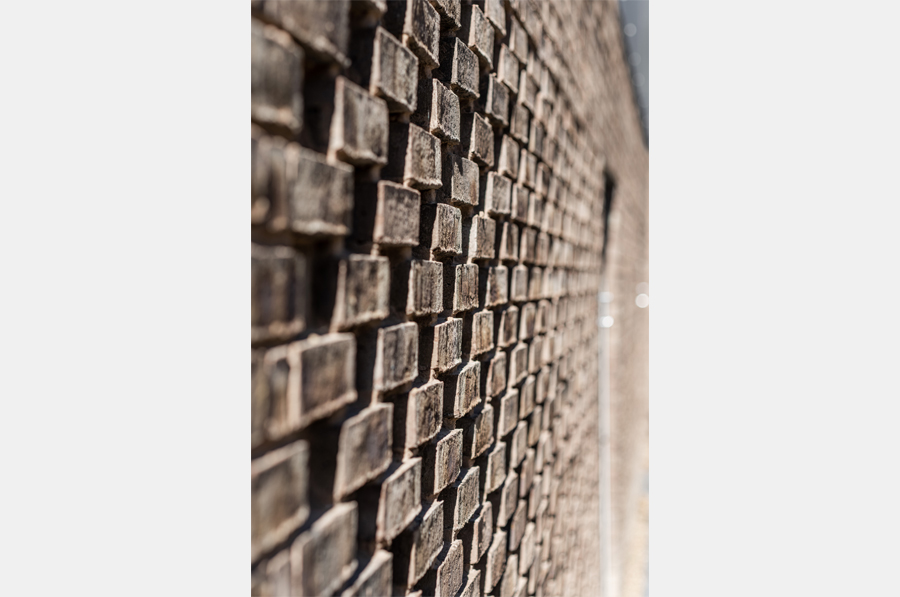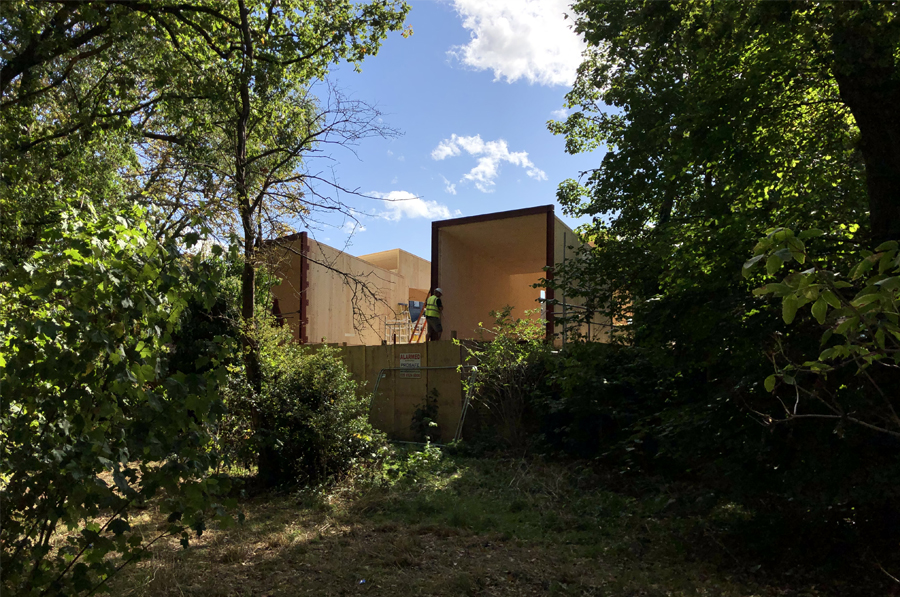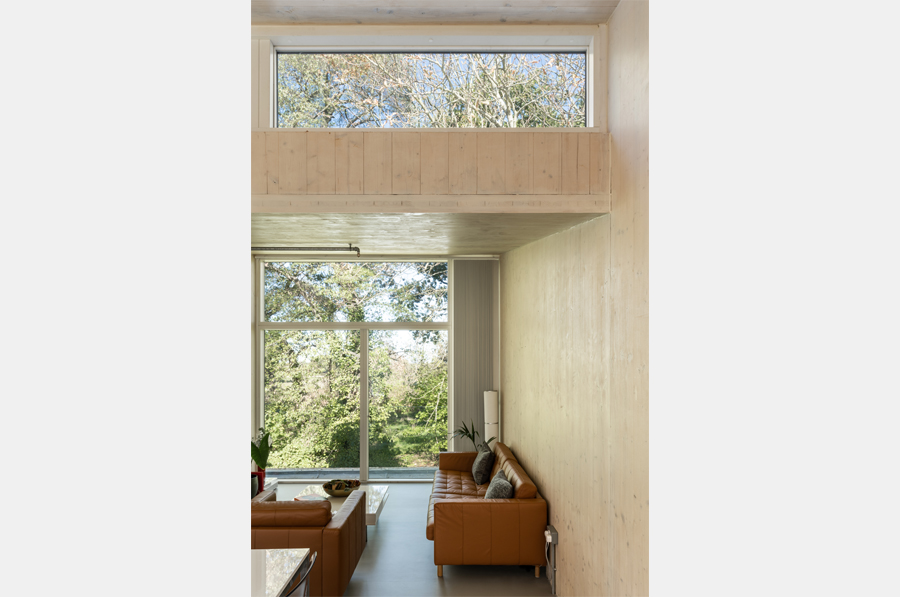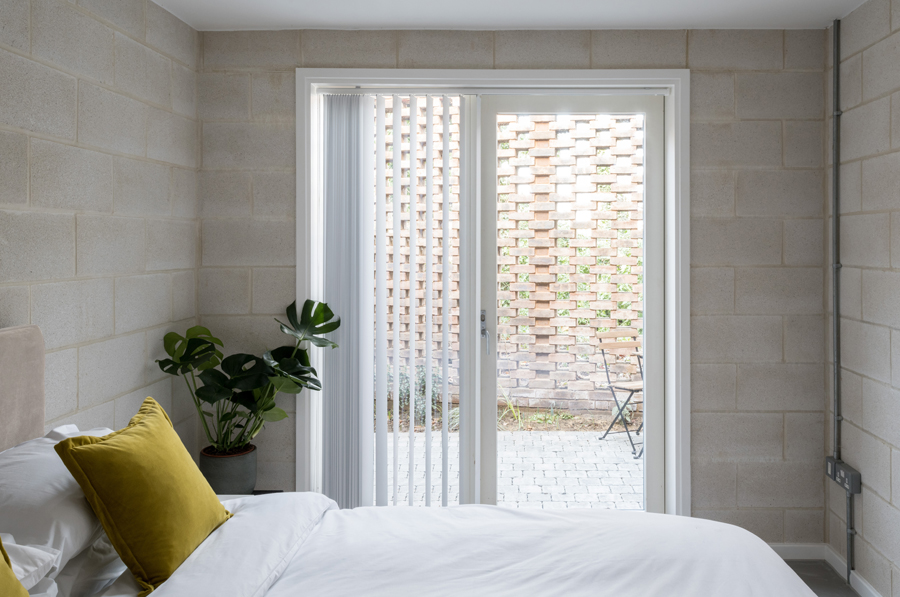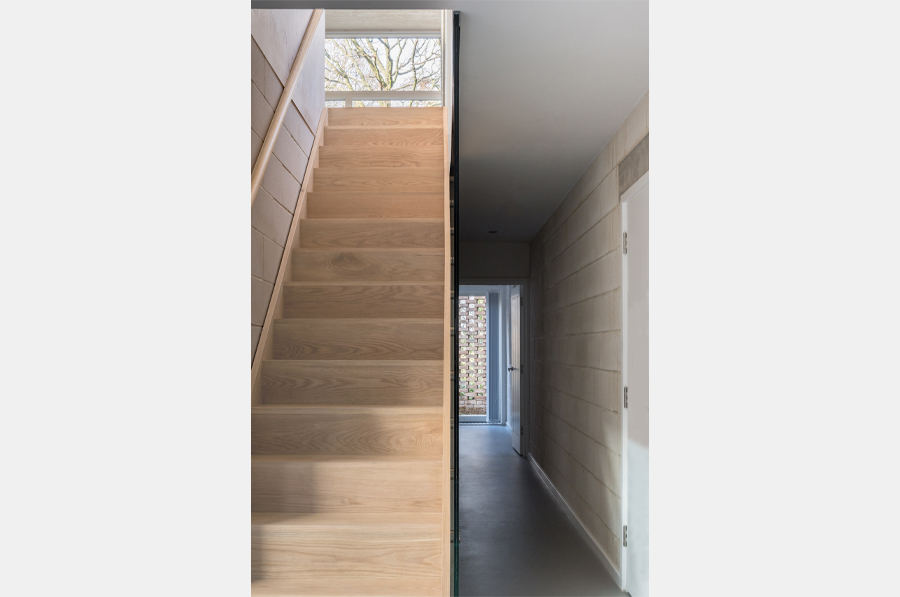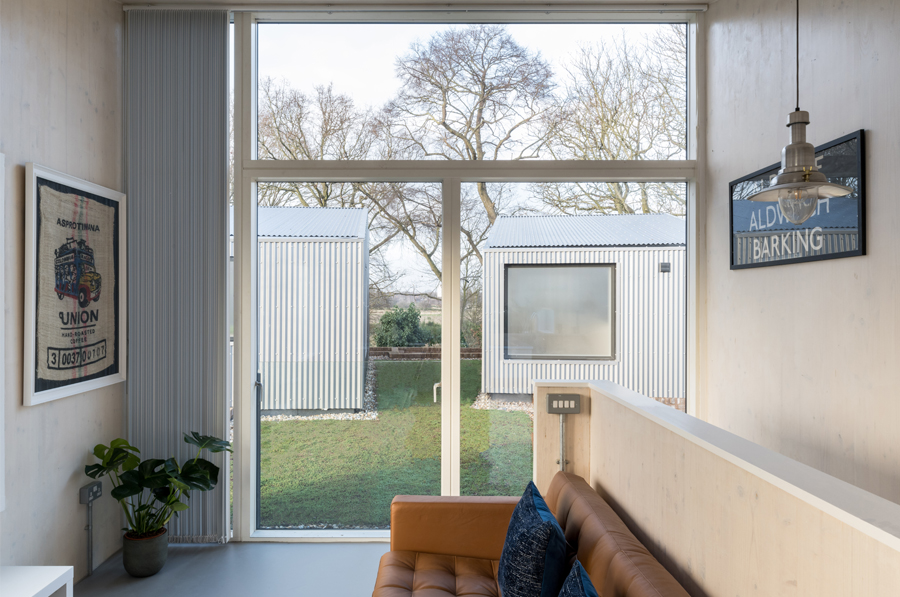Forest Houses
Located along the edge of Wanstead Flats, Forest Houses revitalise an awkwardly-shaped brownfield plot. Once a builder’s yard, the project delivers three interwoven, upside-down homes, sensitively designed to nestle into their site and make the most of their park-side views.
Forest Houses’ unusual site is bounded by a row of terrace houses to the front and the parkland of the Flats to the rear. The plot had been in our client Spencer’s family for decades. Once home to a local construction business, run by his late father, all that remained was a dilapidated warehouse unit.
Spencer’s brief sought to make the most of this under-used and constrained brownfield plot, with a site-specific design solution that could offer a nod to the industrial feel of the site, while responding to and respecting the neighbouring. His father and family put a lot of hard work into this site over a number of years, and he was eager to create something special that would commemorate that time, and be there for the next generation to enjoy.
“Successfully responding to the site and surroundings, the architect has created a distinctive design that breathes new life into this redundant yard. Forest Houses illustrate the potential for transforming infill sites such as this using a design-led approach.”
Royal Institute of British Architects Awards Jury
With a number of previous planning permissions failing to unlock the plot, we took a radically different approach, using an iterative design process to test ideas, rather than being limited by pre-defined solutions.
Spatial models allowed us to develop a design approach that could balance the well-being of new residents – with light-filled living spaces and far-reaching views over Wanstead Flats – with the needs of existing neighbours.
These models were key to informing our consultation process with local residents and understanding their hesitations around privacy from the development, given the tight constraints of the infill plot.
Open dialogue with planners allowed us to prioritise reducing the risk of overlooking, shaping a design that is orientated north towards the Flats. The building’s sawtooth roof profile, to match the height of the existing terraces, avoids the appearance of a dominating, bulky development that would overlook or shade existing gardens.
From the outset, Spencer understood the craftsmanship and creativity required to tap into this site. This collaborative engagement process established our shared vision for a design filled with innovation – a prototype for small infill site housing, that can create much-needed comfortable new homes, and optimise the number of units feasible on common backland sites like this.
Tucked into the furthermost corner of the site, our innovative design for the new-build homes – one 3-bedroom family home, and two smaller 2-bedroom houses – is based on ‘upside-down’ living principles. This simple re-arrangement moves bedrooms to the ground floor and positions the kitchen and living spaces on the first floor.
As a result, large windows on the upper floors provide plentiful daylight and elevated views over Wanstead Flats in the spaces enjoyed most often by residents. To make the most of the roof profile and its nod to the industrial heritage of the site, we also introduced full-width, openable clerestory windows to enable passive stack ventilation as a sustainable and efficient means of keeping homes cool in the summer. Windows on all four sides of the open-plan first floor allow residents to experience the movement of the sun over the course of the day. Where overlooking neighbouring homes may have been a problem, windows have been frosted, providing privacy and delivering diffused light.
Beneath the first floor pods, the bedrooms benefit from a more secluded feel thanks to a carefully-considered jigsaw arrangement that sees the three houses efficiently interlock layouts around a series of lightwells and courtyards. This maximises the site’s potential by optimising the number of family homes on the plot while introducing a strong relationship between inside and out.
Reflecting our practice ethos of maximising the ‘spaces in-between’, these draw natural light and sunshine deep within the floorplan, creating private outdoor spaces and tranquil views from all of the bedrooms.
Throughout the design process, we worked closely with Spencer, drawing on his knowledge of the area to help us develop a sensitive, yet truly creative and ambitious design. He had a completely hands-on approach, which included him taking on the role of contractor for the first time on this project – involving him further in all project decisions as we supported and guided him through the process.
To develop a contextual architectural language, the material palette draws on the site’s history as a builder’s yard, and the traditional masonry of the terraces.
Celebrating simplicity in materials and innovation in design and construction, the project fuses traditional and modern methods of construction.
Time-lapse site video
Brick wraps around the ground floor to create a plinth-like appearance, before extending to form the plot’s boundary walls, while above, the first-floor volumes are constructed from pre-made, cross-laminated timber panels. This approach established a sustainable, efficient and financially viable delivery programme for our client, with the timber elements assembled in less than 5 days. The surfaces of these were clad in profiled steel sheets to create a highly textured and unified external envelope that flows between the walls and the roofs.
All materials were responsibly sourced and chosen for their longevity, recycling capabilities and ability to provide a healthy, toxin-free home. Within, their natural qualities are celebrated further and left exposed in an honest, unfinished approach. White, exposed blockwork is complemented by a tactile cross-laminated timber structure above, building a connection with the surrounding tree canopies.
To create a truly sustainable and efficient-to-run home, the project’s low-tech approach carefully balances glazing with a super-insulated, highly energy-efficient façade composition. This has been designed to provide a comfortable air temperature in winter while ensuring that the homes remain cost-effective to live in – this goal is supported by the introduction of an air-source heat pump.
Externally, Forest Houses include shared outdoor spaces such as the transformation of the parking forecourt, into a flexible, communal space, where residents can gather and spend time together. We also introduced a new, subtle point of connection to the Flats, allowing residents direct access to the expansive grassland via the boundary wall.
We forged a close, collaborative relationship with Spencer that was central to Forest Houses’ innovative design. We ensured that the project far exceeded his expectation for the potential of his site, both in terms of adding value to the local area and representing a high-quality and innovative architectural legacy for his father.
“The end result was a sublime development that gives so much to the local area, yet remains sensitive to its context. Whenever I have a chance to visit, it gives myself and my wife so much pleasure to see how our site has been transformed by these new homes and we are incredibly proud to often see passing neighbours or pedestrians stop and do the same.”
Client
As architects, our focus is on understanding how people experience our projects. It has been hugely rewarding to hear residents reflect on how it feels to live at Forest Houses, and how nestled amongst the trees, the homes feel like an extension of Wanstead Flats. Pulling the outside in, this close connection offers a unique perspective on nature and its seasonal changes, playing an important part in residents’ wellbeing and creating a home they can enjoy for years to come.
